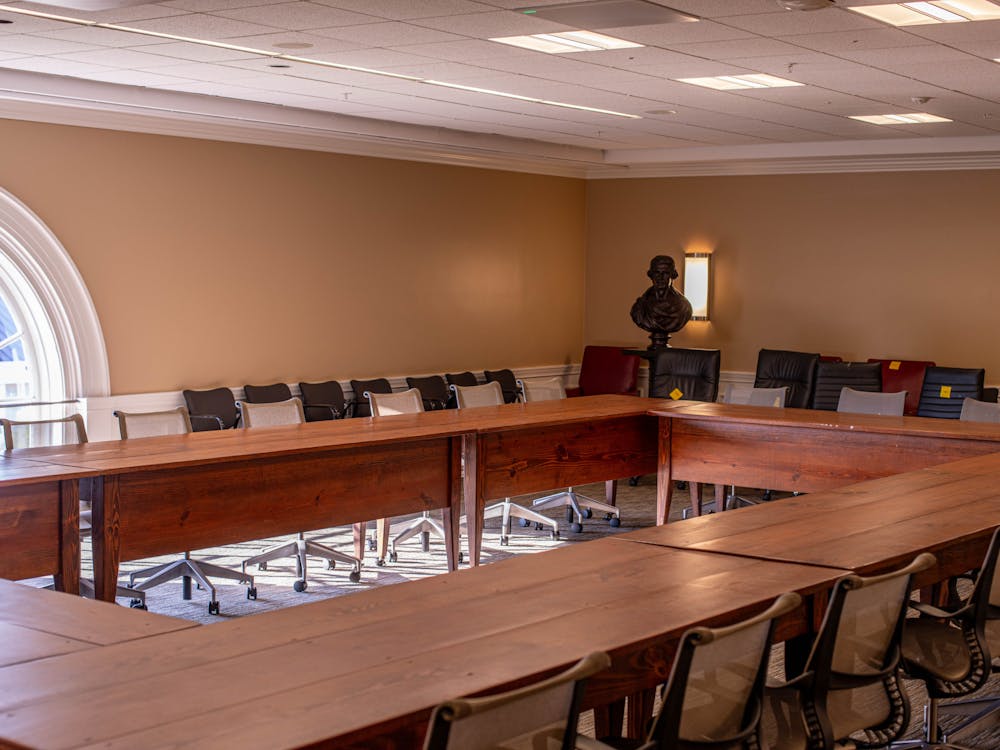College affordability was the central topic of a recent congressional roundtable discussion held by Sen. Chuck Grassley, R-Iowa, and Rep. Peter Welch, D-Vermont, with leaders of nationwide higher education institutions.
At the discussion, Grassley proposed legislation that would require colleges and universities to spend a certain percentage of their endowment funds to lower tuition rates and expand the number of financial aid resources available to college students, according to University Chief Financial Officer Yoke San Reynolds.
Grassley’s committee collected detailed survey information from 136 schools that have endowments of more than $500 million, Reynolds said, including the University. The surveys were comprised of a wide-ranging set of questions about the size of schools’ endowments, how they are managed and how they are spent, said Leonard Sandridge, University executive vice president and chief operating officer.
The information reflected in the surveys is one resource the committee will use to determine the shape of potential legislation.
Currently, Grassley’s proposal calls for schools with large endowments to annually spend 5 percent of their endowment funds, Reynolds said.
Enforcing a 5-percent spending rate may not have significant consequences for the University, Sandridge said, but the University administration does not believe it is a necessary step to take in order to lower tuition costs.
“We don’t disagree in concept,” Sandridge said, noting, however, that if enacted, the legislation “might cause institutions to do things that would not be in their best interests.”
Over a period of time, spending 5 percent of their endowment funds might not be a problem for some schools, he explained, but this might not be the case for all schools.
“As a practical matter, as endowment values change, up or down, there would be times that it would be prudent to not to be [spending] 5 percent,” Sandridge said.
The type of legislation Grassley has proposed imposes a fixed spending rate upon changing endowment funds, Reynolds said. This can create an unpredictable financial situation and is a source of concern for institutions of higher education, she added.
“All endowments support ongoing programs,” she said. “So budget stability is very important for us.”
When discussing endowments, other technical concerns can arise, Reynolds noted. Oftentimes a significant portion of a college’s endowments includes restricted donations, which can only be used toward the specific means for which they were given.
“A large portion of our endowment has been given by our donors for very specific uses,” Reynolds said.
Sandridge noted that the University “very much honor[s] the restrictions [specified by donors] both in spirit and to the letter,” adding that the University has had a number of generous donors over the years who have established a solid foundation for scholarships and fellowships.
“I don’t know of a public university that has a better financial aid program for undergraduate students than the University of Virginia,” he said.
Despite the discussion that has been generated by news of the possible legislation, Grassley’s spokesperson Jill Kozeny said “the senator hasn’t made any determination of what legislation would look like.”
Last week Grassley announced he would revoke his legislative proposal in favor of seeking more information and open discussion, Kozeny said, noting the issue has been developing over the course of the year and has seen a tremendous amount of activity since last fall.
“The discussion has only just begun,” Kozeny said.






